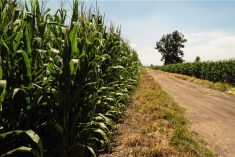CNS Canada — The rally on which southern Alberta feed grain prices have been riding since the start of the year continued this week.
“Right now (we’re seeing) some of the best prices on barley for farmers that have been seen in Alberta for a while,” said Joshua Boyko of CorNine Commodities in Lacombe.
According to Boyko, the price rally has stayed consistent over the last week for feed barley. Between farmers being bullish and locking their bin doors, and relatively full cattle placements at feedlots, demand has been on the rise.
Read Also

U.S. livestock: Feeder cattle hit contract highs on tight supply
Chicago | Reuters – All Chicago Mercantile Exchange feeder cattle futures and most live cattle futures hit contract highs on…
Feed barley bids in Alberta are now sitting at $5 per bushel or slightly above, for on-farm pickup.
Factoring into the rally has been some increased uncertainty around rail delivery of corn from the U.S. and Manitoba.
A rail strike was temporarily averted Friday after Labour Minister Patty Hajdu ordered Canadian Pacific Railway conductors, engineers and signal maintainers to vote on the company’s latest offer.
According to Boyko, whether the strike happens or not, it will start to have an impact on the market around mid-May and early June.
Feed wheat prices have also benefited due to the tight supply. In Alberta, feed wheat is sitting at $6.25-$6.50 per bushel, for on-farm pickup.
“With a tight carryout for both on barley and wheat coming into this marketing year, as each commodity’s availability starts to (dwindle), the supplies start to tighten, then you’re going to see a rally in all of the pricing,” Boyko said.
Reports of flooding in southern Alberta aren’t having an effect on the market yet. According to Boyko, it’s still too early to tell how the flooding will impact seeding. Over the last couple of years, planting in southern Alberta has been relatively delayed.
“I think if you’re looking at a 10-year average we’re probably not nearly as behind as that average indicates… (in) our area, Lacombe, Ponoka, (people are) still (hopeful to be) getting crops in by the end of May,” he said.
The flooding mostly hasn’t affected feed grain shipping either, Boyko said. There have been a few disruptions where alternative routes had to be used, but annual spring road bans have been more disruptive, he said.
— Ashley Robinson writes for Commodity News Service Canada, a Glacier FarmMedia company specializing in grain and commodity market reporting.

















